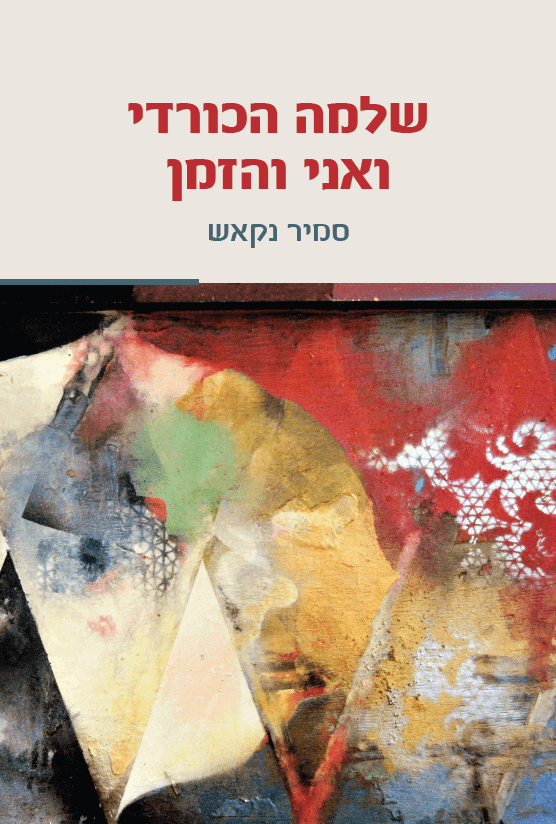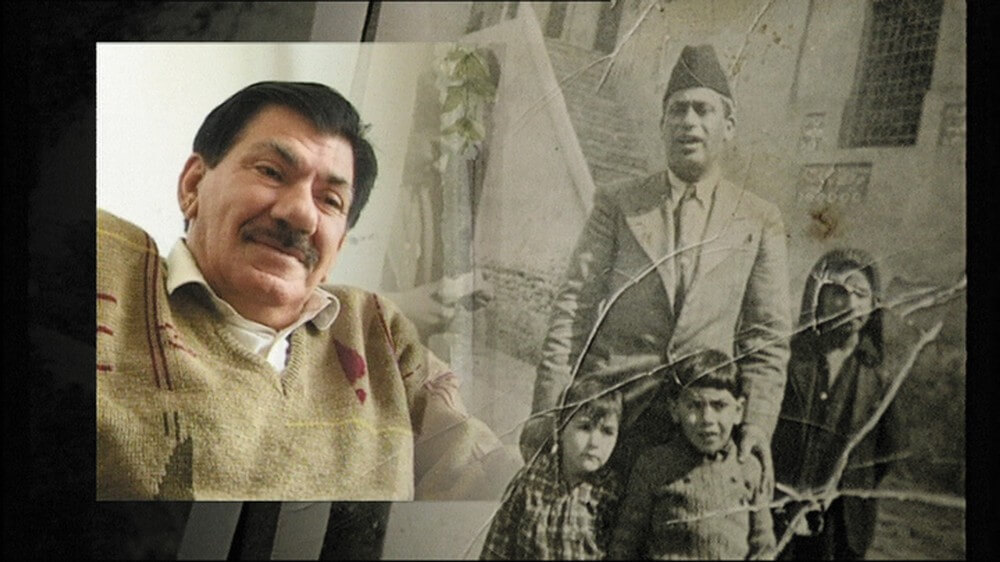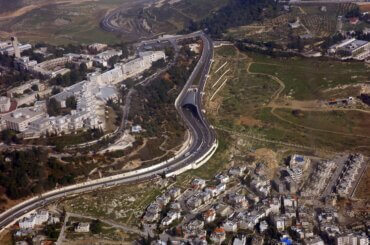SHLOMO THE KURD, ME AND THE TIME
By Samir Naqqash
Translators: Samira Yosef and Ruth Naqqash-Vigiser
Van Leer Institute Press and Yedioth Books, 80 NIS
The recent Hebrew publication of Samir Naqqash’s novel “Shlomo the Kurd, Me and the Time,” which was originally written in Arabic, is an equally sad and happy moment.
Naqqash is perhaps the most prolific modern Iraqi-Jewish writer, yet his work was ignored for decades by the Israeli academy, as is the case with most esteemed Jewish-Arab writers. The Van Leer Jerusalem Institute and the Maktoob project are reversing the neglect with the only initiative to translate Arabic classics into Hebrew. Their approach aspires to “rid Hebrew-language literature of its orientalist conceptions of both Arabs and Arab countries.”
Yet it is impossible to just look forward and celebrate the establishment of Maktoob and these treasures of Arabic without looking back in rage.

It is true that Samir Naqqash received three prime minister’s prizes for Arabic literature. Still only one book before this novel – out of a total of 14 books he published over his lifetime – was translated and printed in Hebrew. But beyond the accolades, he lived with a sense of deprivation. Naqqash was born to an affluent family in Baghdad and they immigrated to Israel in 1951 when the author was 13 (and already writing) amid a wave of Jewish emigration. After Naqqash’s death in 2004 in Petah Tikva, his sister said he described their departure from Iraq as an “exile.”
Both Naqqash the man and the author spent years yearning for some form of reunion with Baghdad, if not to the land he always felt was his home, within the culture. He even thought about going back after the American conquered Iraq but he decided not to do it.
His hero in “Shlomo the Kurd, Me and the Time” is a Jew from the city of Sablah who becomes a refugee after witnessing catastrophes of the twentieth century that swiftly ended a 2,000 year Jewish history in Iraq. In the novel the hero does not know Arabic, but speaks other languages such as Russian and Persian. Due to its strategic importance between Russia and rival Turkey, the curse of World War II enters Sablah, a remote Kurdish mountain town located in what is today Azerbaijan. Shlomo evades the Farhud in Baghdad, 1941 Nazi-inspired massacre that killed 180 Iraqi Jews. Mirroring the author’s life, the character then wanders from Baghdad, to Tehran, to Bombay, and then settles in Israel.
Two years after arriving in Israel, at 15 he began looking for ways to escape. He longed to live alongside a thriving intellectual Iraqi diasporic community. His first attempt came when he crossed the northern border to Lebanon on foot with a cousin. Over the next decade he tried his luck outside of Israel with trips to Iran, India and Egypt. He even traveled to live alongside Iraqi exiles to Manchester in England.
After his first trips he returned to Israel while still in his 20s, without the public literary recognition he so richly deserved. The linguistic vision of cultural Zionism centered the melting pot around the revitalization of the Hebrew language and did not accept Arabic, Yiddish, or other immigrant languages. Zionism required abandoning these languages and adopting Hebrew as the price of admission into Israeli culture.
But Naqqash did not want to undergo integration or assimilation into Israeli society and what he saw as its flat culture. From the age of six on he wrote in literary Arabic, but his audience was extremely limited. He never experienced the regular stage readings of his works in front of an overflowing audience at a grand theater, which was common for his contemporaries.
While he was lauded as “one of the Arab world’s greatest writers” by the great Naguib Mahfouz and published in the Arab world, he was never a legitimate part of it. He found the Arab world could not accept him because of his Israeli citizenship, and the Israeli world could not accept him because of his Arabness.
Being marginalized inadvertently gave Naqqash the freedom to write experimentally in an avant-garde way that had not been done before. His books would go on to be taught in universities spanning the globe. The hallmark of his style is that he took literary Arabic, and with fascinating alchemy he merged it with spoken Iraqi dialect, in the special tradition of Baghdadi Jews. Arabic is a diglossia language, meaning it’s literary tradition is so distinct that not every native dialect speaker has fluency in literary Arabic. What’s more, beyond merging Iraqi-Jewish-Baghdadi dialect with literary Arabic, he incorporated phrases from other languages he knew, such as Persian and Hindi. Multilingual polylinguist writing opposes the separation between literary Arabic and spoken Arabic. The addition of other languages was his unique way of opposing a singular national language, a process that collapses people, place and language under a flag, irrespective of their distinct cultural backgrounds.
The result is hard to appreciate, because only a few–like his sisters, Ruth Naqqash-Vigiser and Samira Yosef who translated the book for Maktoob–know all the languages and therefore can enjoy all this linguistic richness.
Still, in Hebrew version published this year some of the original words were retained by the translators. Khawaja, an Arabized Persian honorific for minister or sir, survived the Hebrew translation (I immediately remembered Ronnie Somek’s Khawaja Bialik, another Iraqi poet in his mind), as did the word ya which means “oh.”
At times the translators chose to use a Hebrew word alongside a similar Arabic word. The “Night Journey – the Isra’ – the everyday has become a mitzvah like evening prayer” appears on page 366. See how beautifully, Hebrew, Arabic, and Judaism come together?
In a article that was published as an afterword in to the novel and first appeared in the Journal of Levantine Studies, Almog Behar and Yuval Ivri revel in Naqqash’s polygotic literature:
“A critical reading of Naqqash’s work reveals a more complex story that problematizes the monolingual narrative of binary options between two separate languages. Such a reading reveals instead the ways in which his writing destabilizes the clear-cut separations between Hebrew and Arabic and challenges the perception of pure, unified national languages and literatures (whether Hebrew or Arabic), presenting a continuum of dialects and languages that stretch from multiple dialects of Arabic through Persian, Aramaic, and Hebrew, and undermining the ethos of the monolingual culture. Naqqash’s polyglotism challenges the sharp national lingual matrix, undermining the link between language and national territory or religious identity.”
The translation editor for “Shlomo the Kurd, Me and the Time,” Benjamin Reish writes in another article included in the book,
“Sablah represented the world in a tiny point, a world in which evil, killing, starvation, cruelty, selfishness, tyranny, humiliation, greed and indignation reign. It seems that in the face of the foreign armies invading Sablaj and in front of characters who represent the negative values In the beloved and damned town, Shlomo the Kurd stands with qualities of kindness, a desire to help others, responsibility and compassion. The world is described as the next monster to destroy man through war, hunger, cold and man himself: in his stupidity and wickedness.”
The plot of the book is a kind of epic or a tragedy, Rish writes to us,
“To my Interpretation, the plot that has so many places and happens in few parallel sets of time are mocking the Zionist linear time frame. The Zionist time frame asked the writers to show why the exile life of the Jews was so bad that they all were eager to emigrate to Israel and in that way that they were saved by the Israel newborn country. But Naqqash’s literature is so different. The part where his character is in Ramat Gan (Israel) is a small part and he does not praise Israeli life. The other way around. He is more concerned in the loss of the multiethnic, multi religions, multinational life that existed before the birth of Israel. He looks at the changes with the rise of nationalism, and the loss of empire time (Ottoman’s age and colonial age) as a flood that drowned the past. He is longing for this past he tries to understand how this great wind of time changed the people. in his book more than once you could hear the big connection between the Jews and Muslims. In his literary way he answers the present time of Israel but without talking about it directly.”
Throughout the book we are on the run both in Sablah and Baghdad. The Jews lose the problematic cosmopolitanism within which they were forced to flee for their lives. But in time, we learn about the many possibilities of living together – Jews, Kurds, Persians, Azerbaijanis, Baghdadis, immigrants, nomads, merchants, and adventurers. The book, which is set in three places – Baghdad, Sablah, and Ramat Gan, arise in flashes of past memories of the 100-year-old Shlomo the Kurd. He looks back and ruminates on the possibility of living outside of Israel alongside a slow process of entering the idyll. But there is no plot of gratitude for Zionism, but an examination of human processes, of destruction, war, greed, lust, and absurdity.
Naqqash believes in the character of Shlomo the Kurd, but also reveals the protagonist’s blind spots. For instance, Shlomo foreshadowed a famine but he couldn’t see that he would be exiled from Iraq. Similarly, the character loves his wife very much, even after her death, yet he never the less weds a second and younger woman and their marriage
As I read the book, I couldn’t help but think of my place and my insistence on writing in Hebrew while living in Berlin rather than undergoing an assimilation or integration into German, the language in which I live my daily life. True, the situation is completely different, no one forced me to come here, no synagogues were bombed spurring my departure. Still, there are Israeli writers who already write in (broken) German and are entering German culture by affiliating themselves with the language.
Writing in a minority language while living in a majority culture is not easy. And so, I fully understand why Naqqash was constantly trying to move and why he spent years looking for other communities that would admit him. To my delight, as the editor of the Hebrew-language literary journal The Eastern Direction, together with the co-editor Bat Shahar Gurfinkel, we were able to publish Naqqash’s novel “Tantal” in Issue 13 [Page 68, Hebrew].
The extensive work of Samir Naqqash who rises now in the skies of Hebrew culture, deserves to be part of the Israeli canon. I am aware of the great difficulty that is lurking for anyone who tries to translate these texts, convoluted and multilingual, into any language, and especially in Hebrew, which has no dialects or sub-dialects. But we are certainly entitled to appear in full force in the Hebrew culture, even though he never sought to see himself as an Israeli writer. His harsh, deceptive world is sometimes reminiscent of Kafka, and the lush spring of his writing can support a battalion of literary critics. Maktoob deserves all the praise for entering this tangled grove and publishing this wonderful translation.



Thank you for this review. Naqqash sounds a truly fascinating and likely non-Orientalist man (certainly the least such in what is called Israel). But where are the Palestinians? Are they in this book – in any of his books? Certainly the reviewer does not mention the Palestinians ever: Arabs/Arabic for sure (is this the usual zionist elimination of Palestinian-hood via “Arabization”?).
Nor is it – perhaps it is assumed that the reader is fully aware – clearly stated that Arabic and Hebrew are cousins (semitic languages). (Persian/Iranian comes under the Indo-European language grouping.) That for both languages, the Phoenicians provided the alphabet (aleph- beyt), as they did also for the Greeks and Romans (clearly a bright, advanced people the Phoenicians, not only seafarers).
Somehow – perhaps I am mistaken – from this review I get the sense that Mr Naqqash may have been less willing to be unaware of the Palestinians…
“Samir Naqqash’s place in Israeli literature…”
That characterization doesn’t really make much sense, does it? You could just as well speak of the place of Henry Miller in …French literature!
As you say yourself, Naqqash “was lauded as ‘one of the Arab world’s greatest writers’ by the great Naguib Mahfouz and published in the Arab world”; he didn’t write in “Modern” Hebrew. Whatever the connection of his content with the current Zionist entity, his books were translated into conlang Hebrew just as any other Arab author’s, or for that matter just as those of Omar Khayyam, Halldór Laxness or Dostoyevski — what is the place of these others in “Israeli literature”? Especially when one only of his 14 books was translated in his lifetime: that does not suggest much of a connection.
Anyway, thanks a lot for bringing an important Arab writer to our attention.
It’s a shame Mr. Naqqash never understood that:
He could have spared himself a tremendous amount of grief.
Readers will also want to know about the 2018 English translation of Naqqash’s TENANTS AND COBWEBS, an amazing novel about life in a multi-ethnic Baghdadi apartment building, translated by Sadok Masliya, from Syracuse University Press; about English translations of other Naqqash works in Ammiel Alcalay’s superb anthology of Mizrahi/Sephardi Israeli literature, KEYS TO THE GARDEN, and about Samir’s brilliant documentary, FORGET BAGHDAD, about Naqqash, Shimon Ballas (translator of Ghassan Kanafani into Hebrew, and a brilliant novelist in his own right), the novelist Sami Mikhael, and the Iraqi-Israeli communist Moshe Houri–with lots by Ella Shohat, too.
Very interesting.
Human society and the creative arts are so much more complex than many generally assume.
The simple stories of how things are are the creations of ideologues and fanatics.